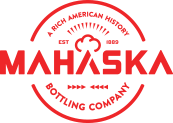It’s October, the official month of Oktoberfest! This festival annually held in Munich,
Germany, is the world’s largest beer festival. It last 16 days and attracts over 6 million
people every year from all over the world. This makes it one of Munich’s largest and
most profitable tourist attractions bringing over $450 million Euros to the city each year.
Oktoberfest is full of beer-drinking, meat-eating Germans dressed in dirndls and
lederhosen who consume a massive amount of beer and food.
Just how much is consumed you ask?
1.5 million gallons of beer
200,000 pairs of pork sausage
480,000 split-roasted chickens
Oktoberfest is so big that the festival has given its name to similar festivals worldwide
that are at least partly modeled after the original Bavarian Oktoberfest. The largest in
the U.S. is Oktoberfest-Zinzinnati which is held in Ohio and attracts half a million visitors
every year.
But just where did the tradition start? In 1810 Oktoberfest was born when Bavarian
Crown Prince Ludwig married Saxin-Hildburghausen Princess Therese on October 12 th .
The citizens of Munich were invited to join in the festivities which were held over 5 days
in front of the city gates. The main event of the original festival was a horse race.
Anniversary celebrations were held annually thereafter becoming larger and more
elaborate each year.
Now onto the good stuff…the beer. Marzen is the variety of beer provided at
Oktoberfest. It is darker and stronger than traditional beer, containing up to 6% alcohol.
This brew is bottom-fermented and is laagered for at least 30 days. Before the advent of
modern refrigeration techniques, this type of beer was brewed in March (as its name
suggests) and allowed to age through the summer, so that it was ready to drink by late
summer or early fall. As with all German beer, the Oktoberfest beer is brewed according
to strict German standards (called the Reinheitsgebot and in effect since 1516) that
precisely define the four ingredients allowed in the brewing of beer: barley, hops, malt,
and yeast.
The 1.5 million gallons of beer that are consumed during Oktoberfest come from only 6
Munich breweries. Augustiner, Hacker-Pschorr, Hofbräu, Löwenbräu, Paulaner, and
Spaten are the only breweries that are permitted to serve beer at the festival. There are
14 larger and several smaller beer tents and beer gardens which provide enough
seating for 98,000 visitors at a time! Beer is served in by the liter in a mug that costs
between 9 and 10 euros. To work as a waiter at this event, you must be able to carry 10
of these beer-filled mugs at a time. Sounds heavy! We can see why the festival has
remained one of the top festivals in the world for hundreds of years. I don’t know about
you, but we are planning on making the it to Munich for the next Oktoberfest!





